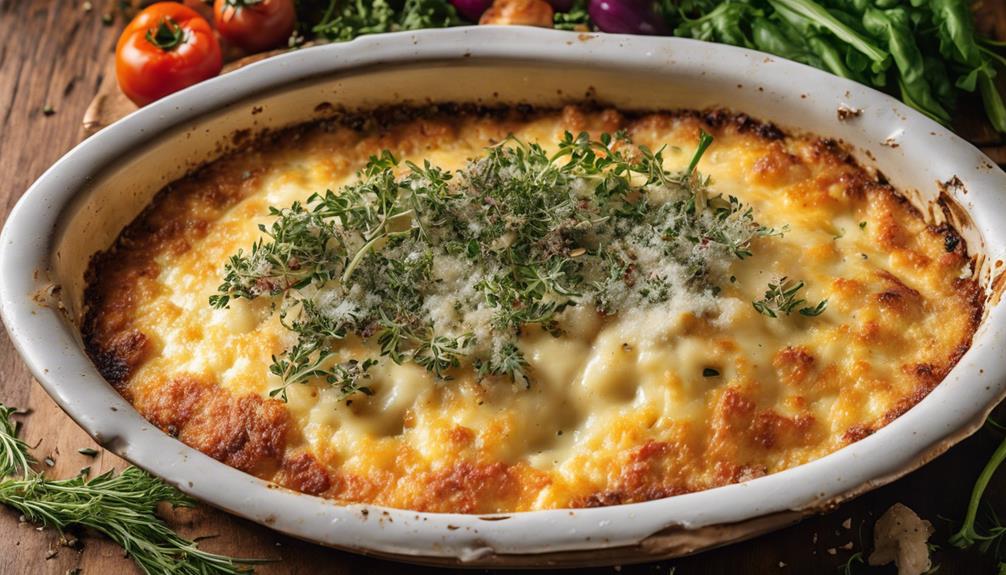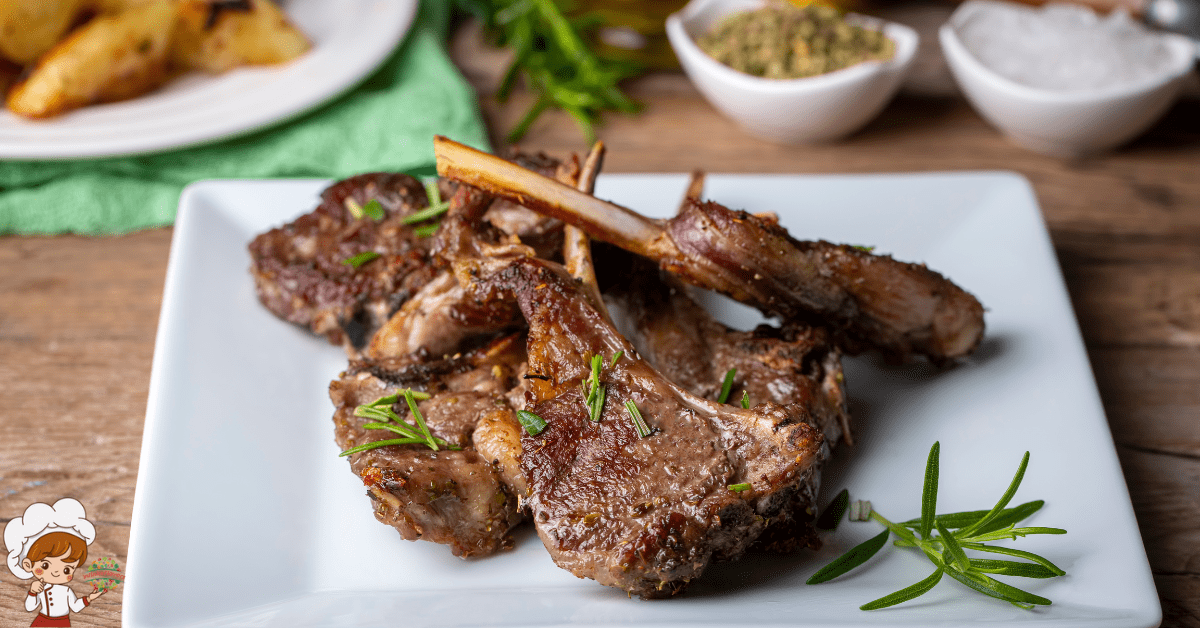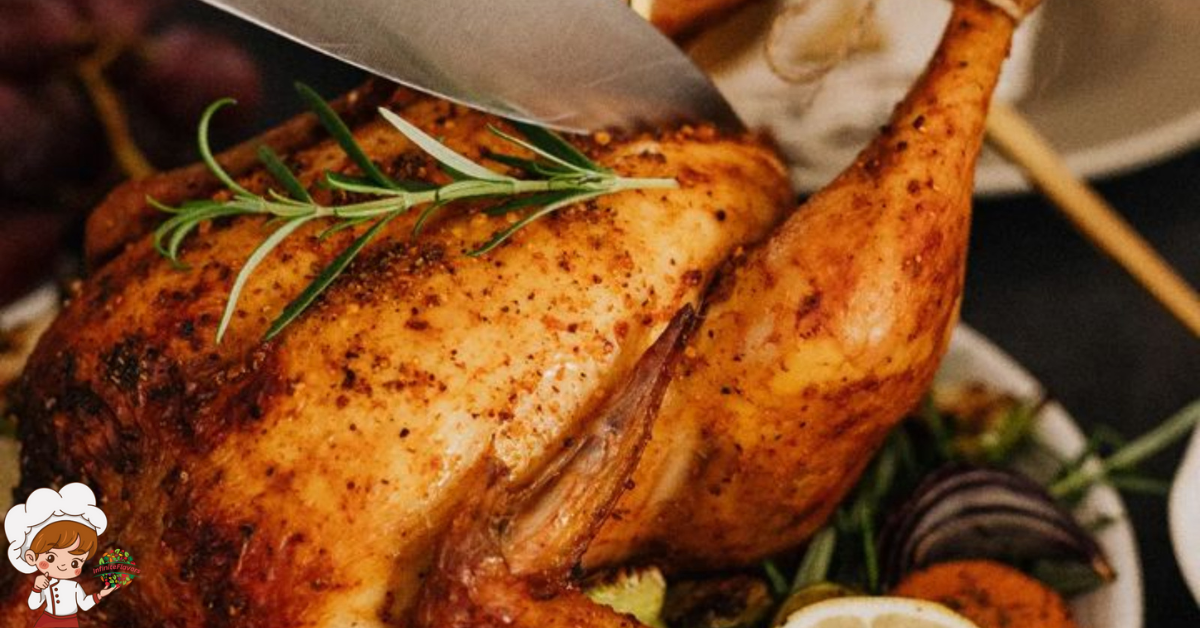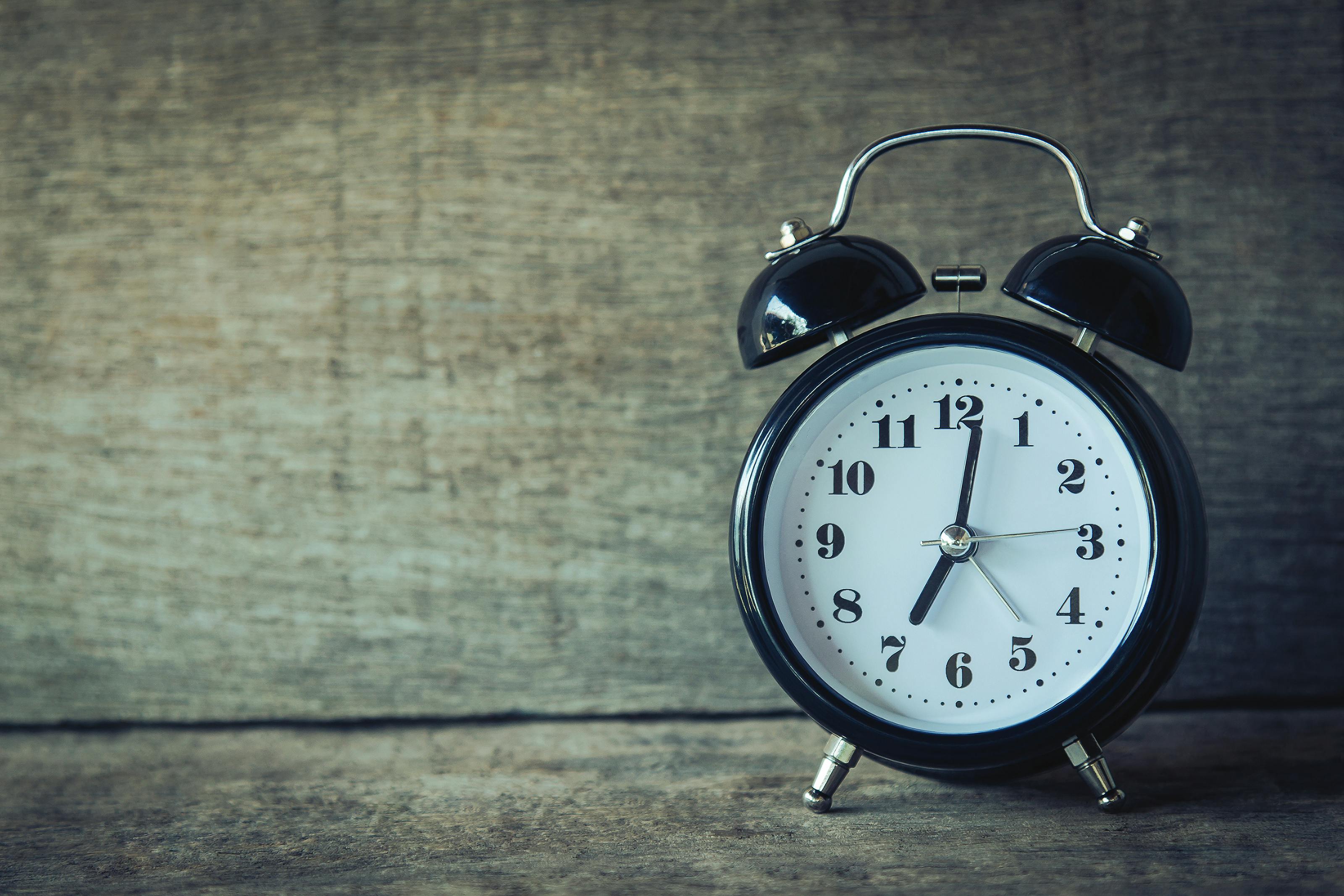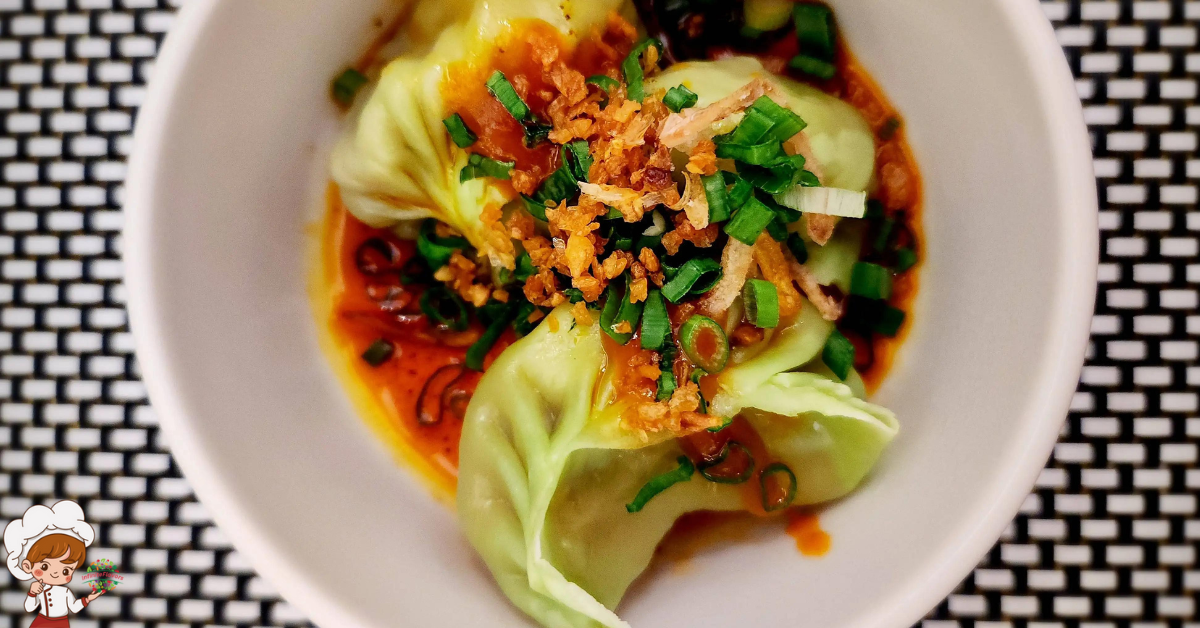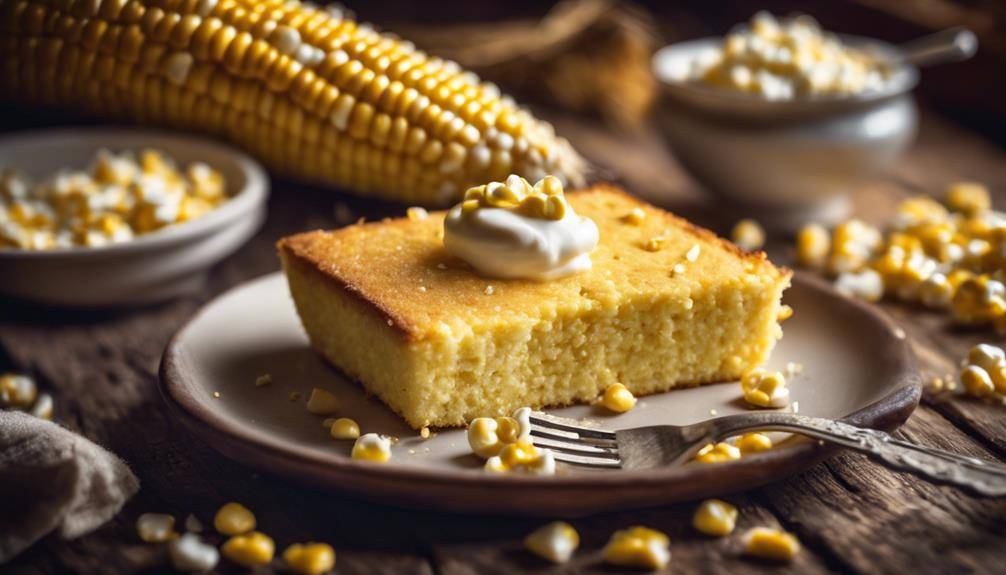Amazing Analog Kitchen Timers For Baking
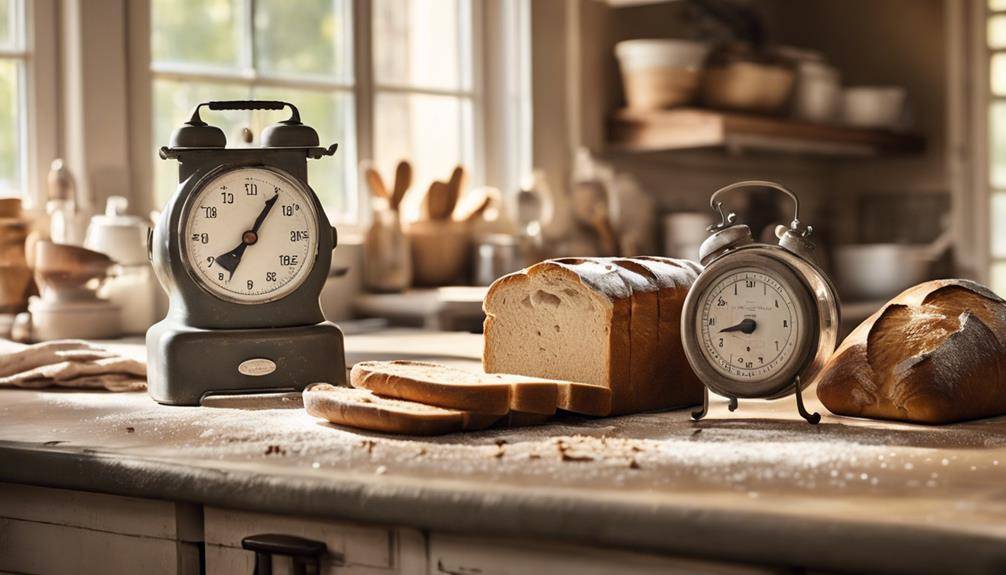
Amazing Analog Kitchen Timers For Baking; If you’re into baking, using an analog kitchen timer is a must. These timers keep your timing precise, ensuring your cookies don’t burn or your bread rises perfectly. With their simple dial mechanism, you can set up to 60 minutes without fumbling through complicated menus. Plus, their tactile feedback and loud alarms make them reliable in a busy kitchen. They come in various charming designs, adding a nostalgic touch to your space. Using one can enhance your baking experience and keep you organized. Stick around to uncover the best options and tips for incorporating these timers into your kitchen routine!
Importance of Timing in Baking
Timing is essential in baking; even a minute can make the difference between a perfect loaf of bread and a dense failure. When you’re in the kitchen, understanding the importance of timing guarantees your baked goods turn out as intended. You can master various baking techniques, but without proper timing, all your efforts might go to waste.
Implementing effective timing strategies is important. For example, when you’re making cookies, knowing when to pull them out of the oven can be the key to achieving that ideal chewy texture. If you leave them in for even a minute too long, they can shift from perfectly baked to burnt, ruining your hard work. Using a timer can help you avoid this common pitfall, allowing you to focus on other tasks while keeping an eye on the clock.
Another area where timing matters is when you’re working with yeast. Allowing the dough to rise for the right amount of time is necessary for achieving the desired fluffiness. If you rush this step, your bread might turn out flat and dense.
Incorporating timing strategies into your baking routine will enhance your skills greatly. You’ll find that setting timers for each step of your process can help you stay organized and make sure you’re attentive to the details. So, whether you’re baking cakes, bread, or pastries, remember: timing is just as important as the ingredients you choose. Your baking journey will be much more successful with this knowledge in hand.
Overview of Analog Timers
When it comes to keeping track of baking time, analog timers are a reliable kitchen companion. These simple devices utilize mechanical precision to guarantee you get the timing just right. Unlike digital timers that rely on batteries and screens, analog timers function through a straightforward winding mechanism. You set the timer by twisting a dial, engaging a spring that powers the countdown. This simplicity means you won’t have to worry about batteries dying right when you need to check on your baked goods.
One of the most appealing aspects of analog timers is the tactile feedback they provide. As you turn the dial, you can feel the resistance and hear the satisfying clicks, giving you a sense of control over your timing. When the timer reaches zero, a loud ring alerts you, assuring you won’t miss it even if you’re busy with other tasks. This auditory cue is particularly beneficial in a bustling kitchen.
Moreover, analog timers come in various designs and colors, adding a touch of charm to your kitchen while remaining functional. They don’t require any complicated settings or programming, making them user-friendly for bakers of all experience levels. Whether you’re baking cookies, bread, or cakes, an analog timer helps you keep everything on track without the distractions of technology. With their blend of mechanical precision and tactile feedback, these timers are perfect for anyone looking to elevate their baking experience.
Benefits of Using Analog Timers
For bakers seeking reliability and simplicity, using analog timers offers several distinct advantages. One of the primary benefits is the straightforward design. Unlike digital timers, analog timers typically feature a dial that you can easily adjust, allowing you to set the time quickly without maneuvering through complex menus. This simplicity can be a game-changer when you’re juggling multiple tasks in the kitchen.
User experiences often highlight the durability of analog timers. Many bakers appreciate that these timers don’t rely on batteries or complicated electronics, which can fail at the worst possible moments. With fewer components to worry about, you can focus on your baking instead of troubleshooting technical issues.
Another advantage is the tactile feedback provided by analog timers. When you turn the dial, you can feel the resistance and hear the ticking sound, which many find satisfying and reassuring. This can enhance your baking experience, making it more engaging. In timer comparisons, bakers frequently note that analog timers have a distinct charm, reminding them of traditional cooking methods and fostering a deeper connection to the craft.
Additionally, analog timers are often more affordable than their digital counterparts. This makes it easier for you to invest in multiple timers, ensuring that you can keep track of several dishes at once. Overall, by choosing an analog timer, you’re opting for a reliable, user-friendly tool that complements your baking routine seamlessly.
Simplicity and Ease of Use
Using an analog kitchen timer makes baking straightforward and hassle-free. With its intuitive dial mechanism and clear time indicators, you can set your timer quickly without any confusion. Plus, the minimalist design appeals to those who appreciate simplicity in their kitchen tools.
Intuitive Dial Mechanism
The intuitive dial mechanism of analog kitchen timers makes them incredibly user-friendly, allowing you to set cooking times with just a simple twist. This dial functionality is designed for quick adjustments, enabling you to focus on your baking without fussing over complicated buttons or digital displays. You’ll appreciate how easy it is to grip the dial, thanks to thoughtful timer ergonomics that guarantee comfort during use.
Just turn the dial to your desired time, and you’re all set. It’s a straightforward approach that minimizes distractions, letting you keep an eye on your baking creations. This simplicity is particularly beneficial when you’re juggling multiple tasks in the kitchen; you can quickly set the timer while preparing other ingredients.
The tactile feedback from the dial offers reassurance that you’ve made the right adjustment, helping you avoid any second-guessing. Plus, there’s no need to worry about batteries or power sources, as these timers operate purely on mechanical principles. The design encourages you to engage directly with the timer, making it an essential tool for anyone who loves to bake. Enjoy the ease and reliability of using an analog timer, and elevate your baking experience!
Clear Time Indicators
Brightly colored markings on analog kitchen timers make it easy to see at a glance how much time you’ve set. These vibrant indicators enhance your time perception, allowing you to quickly assess how long you have left for your baking. When you’re juggling multiple tasks in the kitchen, visual cues from these timers keep you on track without the need for complicated screens or buttons.
You can simply glance at the timer and immediately understand how much time remains, making your baking experience smoother and more enjoyable. The clear numerals and contrasting colors help reduce the risk of miscalculating time, which can lead to overbaking or underbaking your treats.
In a busy kitchen, simplicity is key. Analog timers strip away distractions, letting you focus on the delicious results instead of tech jargon. You’ll appreciate how these straightforward designs reinforce your baking routine, ensuring that you’re always aware of your timing needs. With easy-to-read indicators, even novice bakers can feel confident in managing their baking times. So, when you choose an analog kitchen timer, you’re not just opting for style; you’re embracing a tool that enhances your baking efficiency and precision.
Minimalist Design Appeal
Analog kitchen timers not only offer clear time indicators but also embody a minimalist design that enhances your baking experience. When you choose a timer with minimalist aesthetics, you’re embracing simplicity. These timers often feature clean lines and a basic dial, making it easy to set and read the time at a quick glance. You won’t have to sift through complicated menus or digital displays, which can be distracting when you’re focused on your baking.
With a functional design, these timers prioritize usability. You’ll appreciate how intuitive it is to turn the dial and start timing your creations without any fuss. This straightforward approach allows you to concentrate on perfecting your recipes rather than maneuvering through technology. Plus, the timeless style of these analog timers can complement any kitchen decor, adding a touch of elegance without overwhelming your space.
In the end, using an analog kitchen timer enhances your baking experience by combining practical functionality with a chic minimalist aesthetic. You’ll find that simplicity not only makes your process smoother but also brings a sense of calm while you bake.
Nostalgic Appeal of Analog Timers
There’s something uniquely charming about the gentle tick-tock of an analog kitchen timer that evokes memories of simpler times. You might find yourself reminiscing about baking alongside a parent or grandparent, their hands guiding you as the timer counts down the minutes. This vintage charm isn’t just about the aesthetics; it’s about the feelings these timers stir within you.
When you set an analog timer, you’re not merely engaging with a tool; you’re participating in a ritual that connects you to the past. The tactile sensation of winding the dial brings a sense of familiarity, transporting you back to a kitchen filled with the sweet aroma of freshly baked goods. The soft sound of ticking creates a comforting ambiance, making it easier to immerse yourself in the joys of cooking.
These nostalgic memories are often tied to the visuals of retro kitchen decor, with their bright colors and classic designs. Each timer can tell a story, whether it’s a family heirloom or a recent thrift store find. They remind you of the joy and warmth found in home-cooked meals shared with loved ones.
In a world increasingly dominated by technology, analog timers stand out as a reminder of the importance of slowing down and appreciating the moment. So, the next time you bake, consider reaching for that charming analog timer. Let its nostalgic appeal envelop you as you create delicious memories in your own kitchen.
Accuracy and Reliability
When you rely on an analog kitchen timer, you want it to keep your baking on track with precision. These timers are not just about looks; their durability and longevity mean they’ll be there for countless baking sessions. Let’s explore how you can trust these timers to enhance your culinary experience.
Precision in Timing
For perfecting your baking, precision in timing is essential, and analog kitchen timers excel in accuracy and reliability. When you rely on a timer, you want to be sure it’s providing you with the right time, and analog timers are known for their consistent timer accuracy. Unlike digital versions, they offer a straightforward approach that keeps you focused on your baking tasks without any distractions.
Using effective timing techniques can make a significant difference in the outcome of your baked goods. With an analog timer, you can easily set it to the exact duration needed, whether you’re baking cookies or roasting a cake. The tactile feel of turning the dial allows you to engage more with the process, ensuring you’re mindful of every minute that passes.
Moreover, the simplicity of analog timers means fewer chances for technical malfunctions. You won’t have to worry about battery life or complex settings—just set your time and get back to your baking. By incorporating these tools into your kitchen routine, you’ll boost your confidence and elevate your baking skills, knowing that precise timing is always on your side.
Durability and Longevity
Built to withstand the rigors of a busy kitchen, analog kitchen timers offer impressive durability and longevity. When you choose a timer made from high-quality materials, you’re investing in a tool that’ll hold up against everyday use. Many models feature sturdy metal casings or robust plastic that can endure accidental drops or spills, ensuring they remain functional for years to come.
User reviews often highlight how these timers maintain their reliability even after extensive usage. Unlike digital timers that may suffer from battery issues or screen malfunctions, analog timers operate without the need for power, relying solely on mechanical precision. This simplicity adds to their lifespan, making them an appealing choice for bakers who want a dependable companion in the kitchen.
Furthermore, regular maintenance—like keeping the timer clean and storing it properly—can greatly enhance its longevity. By selecting a timer with excellent material quality and positive user feedback, you won’t just be getting a reliable timekeeper; you’ll also be securing a durable tool that’ll serve you well for many baking adventures to come. So, go ahead and make that investment; your future baking endeavors will thank you!
Types of Analog Kitchen Timers
Exploring the various types of analog kitchen timers can enhance your baking experience. You’ll find timers crafted from different materials, each offering unique benefits. For instance, metal timers are known for their durability and classic aesthetic, while plastic timers are lightweight and often come in a variety of colors, making them a fun addition to your kitchen.
When it comes to timer brands, you have plenty of options. Some popular brands include OXO, Taylor, and Polder, each known for their reliability and user-friendly designs. OXO timers typically have a modern look, featuring easy-to-read dials and buttons that make setting the timer a breeze. Taylor, on the other hand, is celebrated for its vintage-inspired designs, giving you that nostalgic feel while still functioning perfectly in your kitchen. Polder offers a range of timers that cater to different needs, from simple countdowns to more advanced features like multiple timers in one unit.
Additionally, you’ll encounter various styles of timers, such as hourglass timers, which not only look charming but also provide a visual cue of time passing. Then, there are wind-up timers, which rely on a mechanical spring and are often favored for their simplicity. Each type has its own charm and functionality, so consider what fits best with your baking routine. By choosing the right analog timer, you’ll not only keep track of your baking time but also add a touch of character to your kitchen setup.
Mechanical Vs. Digital Timers
Choosing an analog kitchen timer can set the stage for your baking success, but it’s worth comparing them with digital timers to see which suits your needs best. Mechanical timers, often characterized by their straightforward design, provide a tactile experience as you wind the dial. They don’t require batteries, making them a reliable choice for those who prefer simplicity. However, you might find that their timer accuracy can vary, especially if you’re using an older model.
On the other hand, digital timers offer undeniable digital convenience. They typically feature large displays and often come with additional functions like countdowns, alarms, and even memory settings. This can be particularly helpful if you’re juggling multiple tasks in the kitchen. The accuracy of digital timers is generally superior, ensuring you won’t accidentally underbake or overbake your goodies.
While mechanical timers can be charming and nostalgic, they may not always provide the precision you need for delicate recipes. If you’re someone who values straightforward operation and a vintage aesthetic, a mechanical timer could be your best bet. But if you’re leaning towards functionality and reliability, especially for complex baking, a digital timer might be the way to go. Ultimately, the choice hinges on your personal preferences and baking style. Consider how often you bake and the types of recipes you tackle to make an informed decision.
How to Choose the Right Timer
When you’re frequently baking, selecting the right timer can make a significant difference in your kitchen experience. First, consider the timer features that matter most to you. Do you prefer a loud alarm to guarantee you hear it over the noise of mixing and baking? Or perhaps you need a timer with a countdown that’s easy to read from a distance? Look for timers with clear displays and intuitive dials, so you can set them quickly without fumbling around.
Next, think about the timer materials. Timers can be made of plastic, metal, or even glass. While plastic timers are often lightweight and affordable, metal options may offer greater durability. If you’re prone to dropping things, investing in a sturdy model could save you from frequent replacements. Additionally, consider how easy the timer is to clean. Some materials can attract grease and flour, making them harder to maintain over time.
Also, evaluate the size and design of the timer. A compact timer can fit into tight spaces, while a larger one might be easier to handle when you’re busy baking. Choose a timer that matches your kitchen aesthetic and feels good in your hand.
Ultimately, the right timer should combine the features you need with materials that suit your cooking style. By considering these factors, you can guarantee your baking adventures go smoothly, helping you focus on creating delicious treats instead of worrying about the time.
Top Analog Timers for Baking
Looking for the perfect analog timer to elevate your baking experience? You’ve come to the right place! Here are some top analog timers that not only offer excellent timer functionality but also enhance your kitchen aesthetics.
First up is the classic Sunbeam 3-Inch Timer. Its simple dial and bright colors make it both functional and stylish. You can easily set it up to 60 minutes, and the loud alarm guarantees you won’t miss it when your cookies are ready.
Next, consider the Taylor Precision Products Mechanical Timer. Known for its reliability, this timer features a vintage design that can complement any kitchen theme. With a 60-minute countdown and a clear, easy-to-read face, you’ll appreciate its straightforward timer functionality every time you bake.
If you love a bit of nostalgia, the OXO Good Grips Timer is a great choice. With its retro look and modern features, it fits beautifully into any kitchen. The large dial allows for quick adjustments, and its magnetic back lets you stick it to the fridge for easy access.
Lastly, the Westclox Big Ben Timer offers both charm and practicality. Its iconic design adds a touch of elegance while providing accurate timekeeping. You’ll love how its classic look can tie together your kitchen decor.
Whichever timer you choose, you’re sure to enjoy the blend of functionality and style that these options bring to your baking adventures!
Care and Maintenance Tips
How can you guarantee your analog kitchen timer stays in top shape? It’s all about proper care and maintenance. First, familiarize yourself with some effective cleaning techniques. Regularly wipe down your timer with a damp cloth to remove dust and grease that can accumulate over time. For tougher stains, use a mild soap solution, but make sure you don’t soak any part of the timer, as moisture can damage the internal mechanisms.
Next, pay attention to common issues that might arise. If your timer starts to stick or doesn’t wind properly, it may need some gentle coaxing. Try turning the dial back and forth a few times to loosen it up. If you notice that the timer isn’t counting down accurately, check for any debris lodged in the mechanism; a quick clean can often fix the problem.
Additionally, keep your timer away from extreme temperatures or direct sunlight, as this can warp the materials or affect its performance. Store it in a cool, dry place when not in use to prolong its lifespan.
Lastly, consider giving your timer a thorough inspection every few months. Look for signs of wear and tear, and don’t hesitate to tighten screws or replace parts if necessary. By implementing these care and maintenance tips, you’ll make certain that your analog kitchen timer remains reliable for all your baking adventures.
Creative Uses Beyond Baking
Many people think of analog kitchen timers solely for baking, but their versatility can surprise you. You can easily adapt these timers for a variety of everyday tasks, enhancing your time management skills in the process. For instance, set your timer during gardening tasks to guarantee you spend the right amount of time tending to your plants without losing track of time.
If you enjoy cooking experiments, using a timer helps you track cooking phases and prevents overcooking. Similarly, for pet feeding, you can establish a consistent routine by timing meal intervals.
Incorporate a timer into your exercise routines, setting intervals for high-intensity workouts or rest periods to keep you focused and motivated. During study sessions, a timer can help you maintain concentration and take scheduled breaks, boosting productivity.
For those who practice meditation, consider timing your sessions to cultivate mindfulness and create a peaceful ambiance. You can also use analog timers for craft projects, guaranteeing you devote equal time to each creation without losing your momentum.
Even in home repairs, a timer can help you stay on task, making sure you don’t get sidetracked. Finally, for family activities, using a timer can add an element of fun to games or chores, keeping everyone engaged and on schedule. With these creative uses, you’ll find that analog kitchen timers are truly valuable tools beyond the kitchen.
Finding Vintage Analog Timers
If you’re intrigued by the versatility of analog kitchen timers and want to explore their charm, finding vintage analog timers can be an exciting journey. Start by diving into local thrift stores and flea markets—these places often hide unique vintage finds. Check out the kitchenware section, and don’t hesitate to ask staff if they’ve got any items in the back.
Online marketplaces like eBay and Etsy are goldmines for collectors. You can search for specific timer brands, which can help you understand pricing trends. Make sure to read descriptions carefully, as some sellers may overlook historical significance or restoration techniques.
Joining collector communities—whether online forums or local clubs—can also enrich your search. Here, seasoned collectors share tips and might even offer leads on timers you won’t find elsewhere. Engage with these communities; they often have insights into the best places to shop and how to spot authentic pieces.
When it comes to restoration techniques, know that some timers can be fixed up with a little effort. A good cleaning or replacing a spring can bring a vintage timer back to life, making it not only functional but also a stunning conversation piece in your kitchen.
Navigating the world of vintage analog timers may take time, but the thrill of uncovering a beautiful piece with rich history makes it all worthwhile. Happy hunting!
Enhancing Your Baking Routine
An effective baking routine can transform your culinary experience, making it more enjoyable and efficient. By incorporating a vintage analog timer into your baking rituals, you not only streamline your process but also add a touch of charm to your kitchen. These timers, with their nostalgic designs and simple mechanics, help you stay focused on your baking without the distractions of modern technology.
Establishing a consistent routine is key. Start by gathering all your ingredients and tools before you begin, ensuring everything is at hand. Set your timer to keep track of baking times accurately, allowing you to focus on perfecting your recipes. The tactile nature of winding a timer can also enhance your mindfulness, making each baking session feel like a cherished ritual.
In addition to functionality, consider the timer aesthetics that resonate with you. A beautifully designed analog timer can elevate your kitchen’s décor, blending seamlessly with your style while serving a practical purpose. Whether you prefer a vintage look or something more modern, the right timer will add character to your space.
As you embrace these baking rituals, you’ll find that the simple act of timing can bring a sense of calm and organization to your kitchen. With your analog timer by your side, you’ll be able to create delectable treats while enjoying the process. So, let this timeless kitchen tool enhance your baking routine, making each session a delightful experience.
Personalizing Your Baking Experience
When it comes to baking, personalizing your experience can make a big difference. You can choose unique timer features, customize settings for your specific recipes, and even integrate your timer’s aesthetic into your kitchen decor. Let’s explore how these elements can transform your baking routine into something truly special.
Unique Timer Features
Many bakers appreciate the unique features found in analog kitchen timers that enhance their baking experience. These timers come in various innovative timer designs, allowing you to select one that fits your kitchen aesthetics and personal style. Whether you prefer a classic look or a more modern twist, there’s a timer that speaks to your taste.
You’ll also find timers made from unique timer materials, such as wood or metal, which not only provide durability but also add a charming touch to your countertop. Some timers even feature retro-inspired dials or bright colors, making them eye-catching additions to your baking setup.
Additionally, many analog timers boast easy-to-read displays and tactile knobs, allowing you to set the time quickly and accurately. The simplicity of these designs means you can focus on your baking rather than fiddling with complicated digital settings.
With so many options available, you can truly personalize your baking experience. By choosing a timer that resonates with you, you’ll not only make your kitchen more inviting but also elevate your baking routine to a whole new level.
Customizing Timer Settings
Choosing the right analog kitchen timer isn’t just about aesthetics; it’s also about functionality and how you can customize it to suit your baking needs. When you explore timer customization options, you’ll find that many analog timers allow you to set different intervals, making it easier to time multiple components of your recipe.
For instance, if you’re baking a cake that requires different baking times for layers, you can easily adjust the timer intervals to match each layer’s needs. This means you won’t have to rely on your memory or a digital timer that might not fit your style.
Moreover, some timers come with unique features, such as a loud alarm or a visual cue, which can be particularly helpful when you’re multitasking in the kitchen. You can personalize your experience by choosing a timer that resonates with your baking routine, ensuring it meets all your timing requirements.
Aesthetic Kitchen Integration
A harmonious kitchen aesthetic elevates your baking experience, transforming it from a mere task into a delightful ritual. When you think about aesthetic integration in your kitchen decor, consider how an analog kitchen timer can play a pivotal role. These timers not only help you keep track of your baking time but also add a vintage charm that complements your overall style.
Choose a timer that reflects your personality—whether it’s a retro design, a rustic finish, or a sleek modern look. This small addition can tie together various elements of your kitchen, enhancing its visual appeal. You’ll find that a well-placed timer on your countertop acts as both a functional tool and a decorative piece.
Incorporating your timer into your kitchen decor means it won’t just be another gadget hidden away in a drawer. Instead, it becomes a part of your baking ritual, easily accessible and visually pleasing. By thoughtfully selecting a timer that resonates with your aesthetic, you’ll create an inviting atmosphere that inspires your culinary creativity each time you bake. So go ahead, make your analog timer a stylish statement piece in your kitchen!
Frequently Asked Questions: Amazing Analog Kitchen Timers For Baking
Can Analog Timers Be Used for Cooking Other Than Baking?
Absolutely, you can use analog timers for various cooking techniques beyond baking. Their timer accuracy helps guarantee you don’t overcook or undercook your meals, making them versatile tools for any kitchen activity.
Are There Any Safety Concerns With Analog Kitchen Timers?
When using analog timers, you should consider timer accuracy and user preferences. While they’re generally safe, make certain they’re placed away from heat sources to prevent damage or malfunction, which could affect your cooking experience.
How Long Do Analog Kitchen Timers Typically Last?
Analog timers typically last several years, depending on usage and care. With proper maintenance, you can enjoy their mechanical accuracy for a long time. Timer longevity often reflects the quality of materials and craftsmanship.
Can I Repair a Broken Analog Kitchen Timer?
You can often repair a broken timer if you understand its mechanisms. Using simple repair techniques, like tightening screws or replacing springs, can bring your timer back to life without needing to buy a new one.
What Materials Are Analog Kitchen Timers Made From?
When considering timer design features, you’ll find analog kitchen timers typically made from plastic or metal. Their materials impact timer accuracy comparison, affecting how reliably they track time during your cooking adventures.
Conclusion
Incorporating an analog kitchen timer into your baking routine can transform your experience, making it more enjoyable and precise. Not only do these timers offer simplicity and a nostalgic touch, but they also enhance your focus in the kitchen. Whether you’re baking cookies or trying out a new recipe, using a timer helps you achieve the perfect results every time. So, why not embrace the charm of analog timers and elevate your baking game today?



